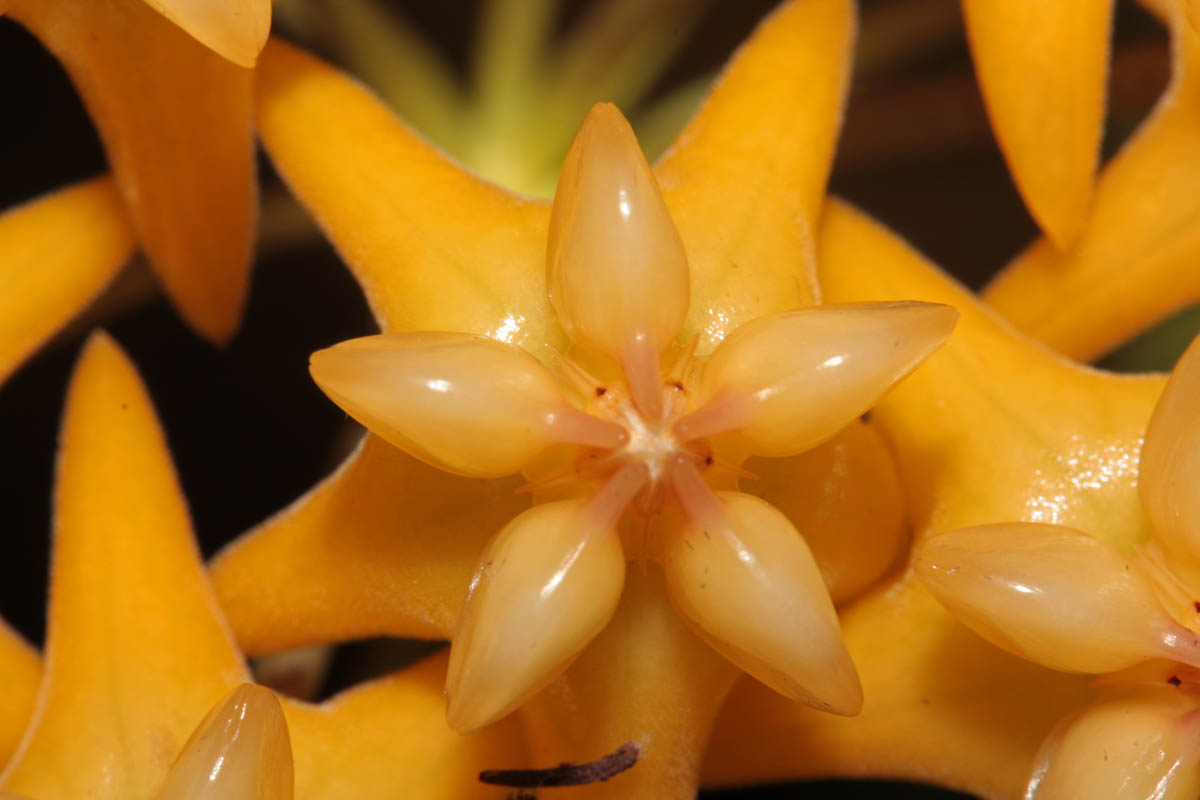Hoya platycaulis
(Hoya platycaulis)

Description
Hoyas are evergreen perennial creepers or vines or rarely, shrubs. They often grow epiphytically on trees; some grow terrestrially, or occasionally in rocky areas. They climb by twining, and with the employment of adventitious roots. Larger species grow 1-18 m (3-59 ft), or more, with suitable support in trees. They have simple entire leaves, arranged in an opposite pattern, that are typically succulent. Leaves may exhibit a variety of forms, and may be smooth, felted or hairy; veination may be prominent or not, and many species have leaf surfaces flecked with irregular small silvery spots. The flowers appear in axillary umbellate clusters at the tip of peduncles. Hoya peduncles are commonly referred to as spurs. In most species these spurs are perennial and are rarely shed. Each flowering cycle increases the length of the spur, and in the larger species can eventually reach 27 cm (11 in) or more. Flowers vary in size from 3 mm (0.1 in) (Hoya bilobata Schltr.) to over 95 mm (4 in) (in H. lauterbachii K. Schuman) in diameter. Flower form is typically star-shaped, with five thick, waxy, triangular petals, topped with another star-shaped structure, the corona. Colours on most species range from white to pink; there are species that exhibit yellow to orange, dark reds to near-black, and there are green flowers. Many are sweetly scented. and most produce abundant nectar.
Taxonomic tree:







